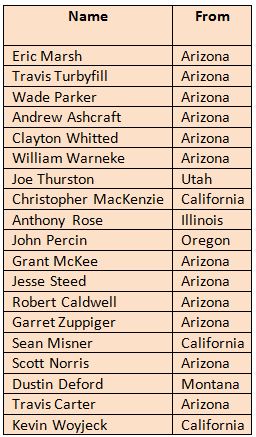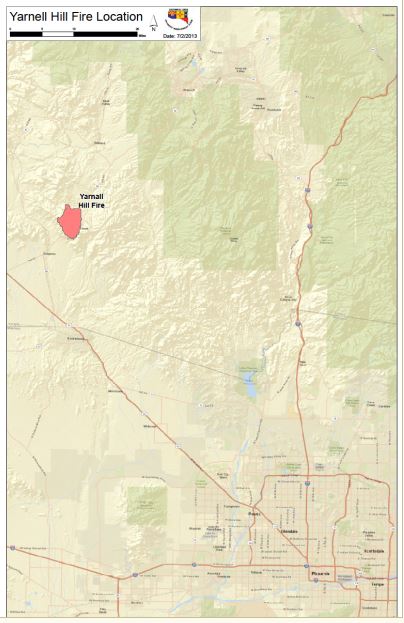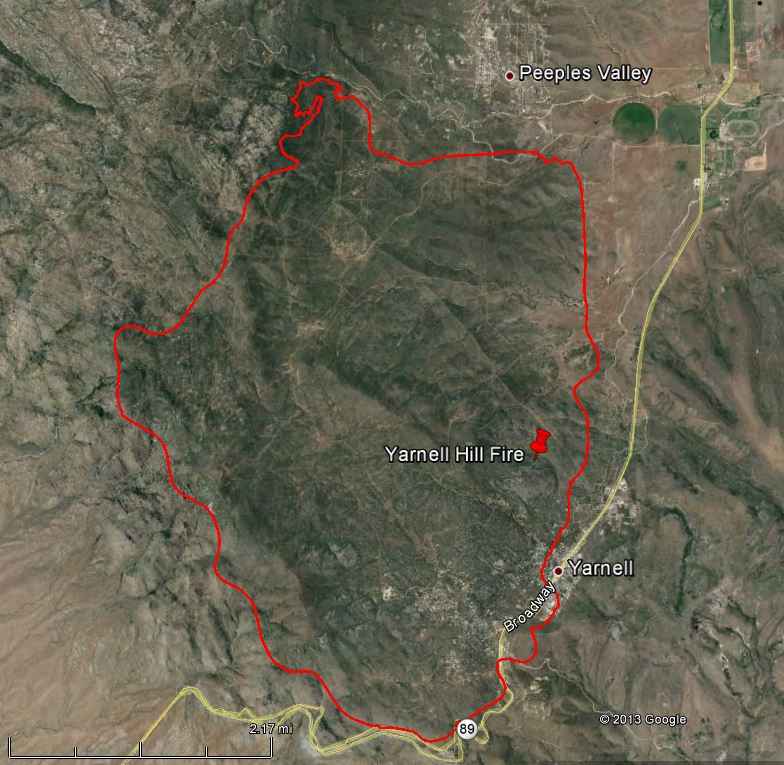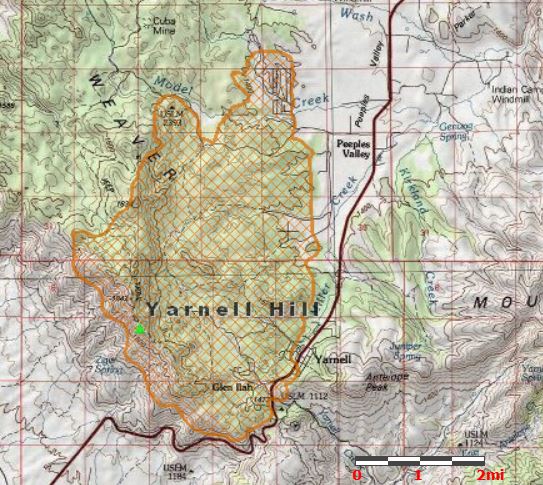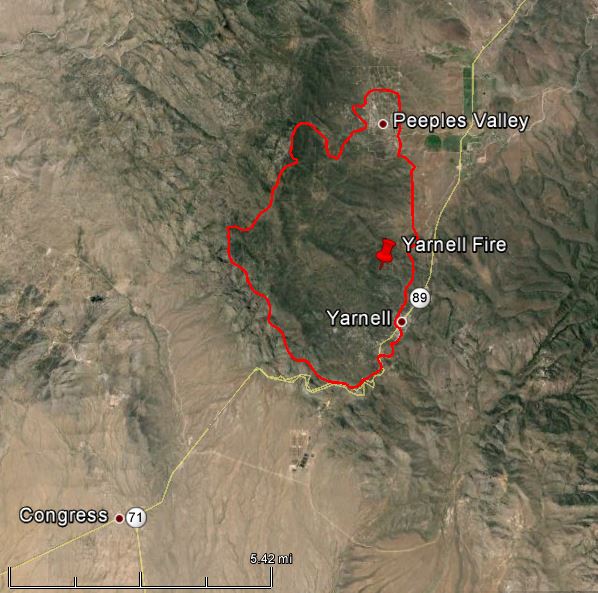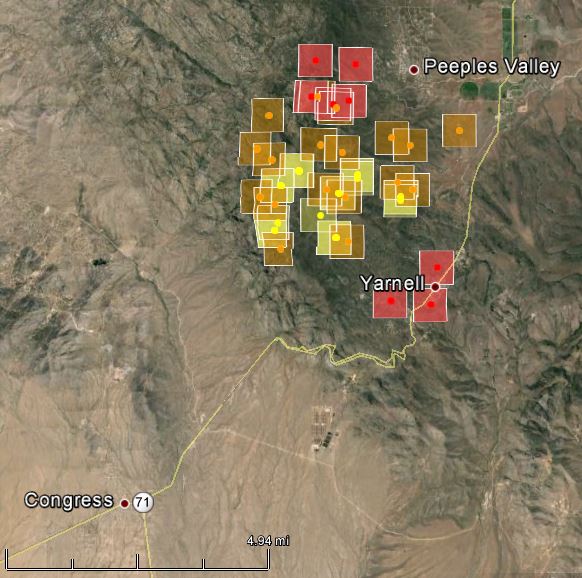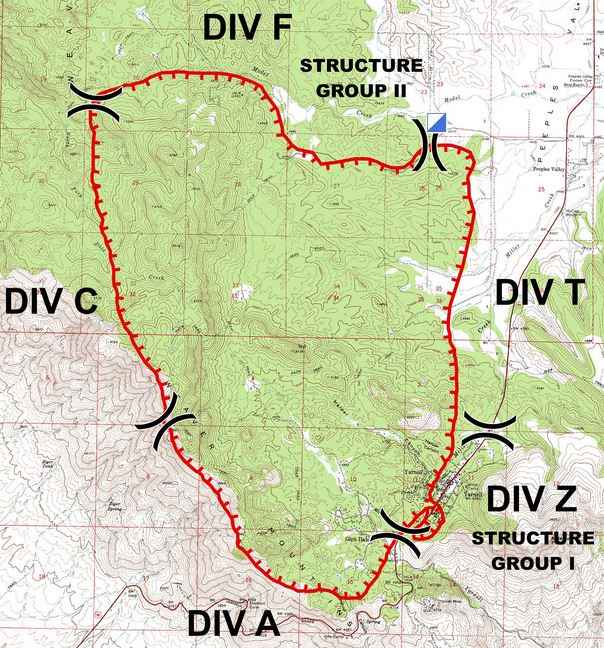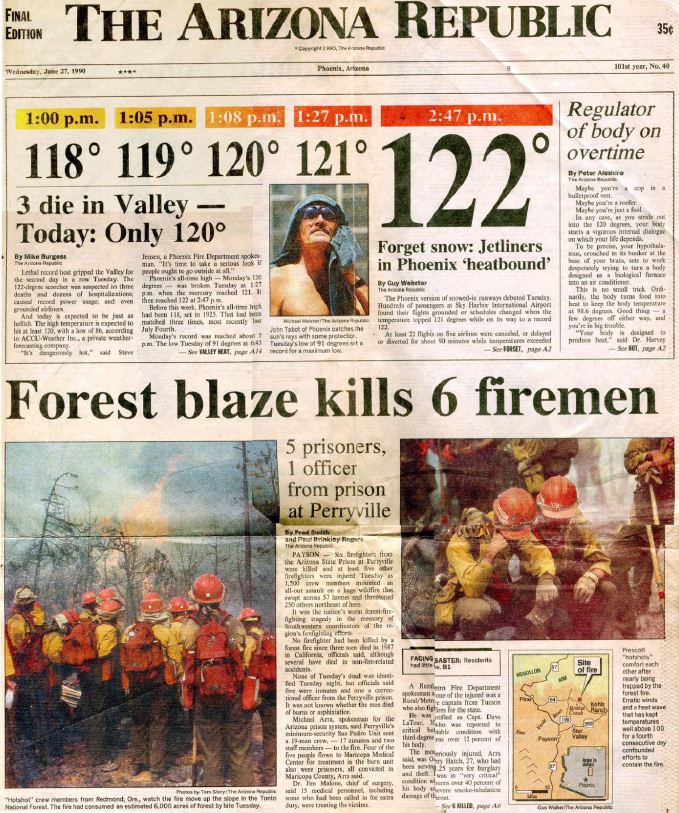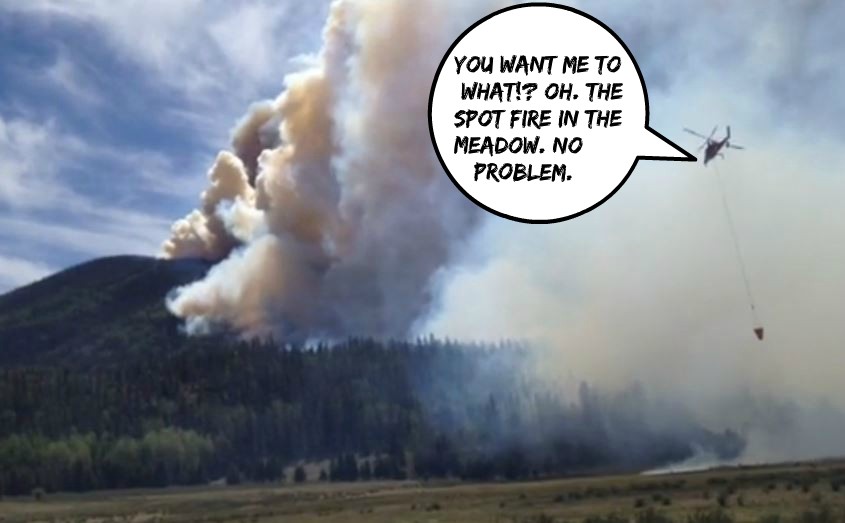(This article was updated numerous times over a couple of weeks, beginning June 30, 2017. To read it in chronological order, scroll to the bottom. The first entry was posted at 9:32 p.m. MDT, June 30, 2013)
***
(UPDATED at 2:26 p.m. MDT, July 15, 2013)
Most of the funerals are over for the 19 members of the Granite Mountain Hotshots that were killed on the Yarnell Hill Fire June 30. From information provided by the incident management team that organized the services, the firefighters are listed below.
The incident management team has posted hundreds of photos of the memorial service, the procession, and the planning.
****
(UPDATED at 10:20 a.m. MDT, July 5, 2013)
An article in the LA Times has some previously unpublished information about the last moments of the Granite Mountain 19. Apparently the crew was attempting to establish an anchor point, presumably at what had previously been the heel, or rear of the fire. They were constructing fireline and may have been burning out that day. A photo that I had not seen before that was texted to the father of one of the firefighters father at 4:04 p.m. shows a firefighter in what appears to be a burned area, looking at the fire. The text said: “This thing is running straight for Yarnell”. By 4:47 p.m. the Arizona State Forestry Division received word sent up through channels that fire shelters had been deployed on the Yarnell Hill Fire.
Below is an excerpt from the article:
Team leader [Crew Superintendent] Eric Marsh told his commanders via radio that the group had a predetermined safety zone. “He was calm, cool and collected,” Ward said. “They all stayed together. Nobody ran.”
Moments later — Ward doesn’t know how long — Marsh radioed his superiors a second time. This message was different: He and his men were going to deploy the small emergency shelters that were their last resort against an advancing fire.
“From what I’ve heard, it was the calmest they’ve ever heard Eric,” Ward said. “They were in a tight spot and everyone knew this was going to be a bitch. But his voice was very calm: ‘We’re deploying.’ ”
Fire officials tried desperately to save the men.
Danny Parker, a fire battalion chief from the nearby Chino Valley Fire Department whose son Wade Parker died with the other Granite Mountain crew members, said he learned from colleagues that his son was in trouble.
“They had deployed their emergency shelters, and helicopter crews were trying desperately to spot them through dense smoke,” he said, wiping tears from his eyes.
He said he was told that Sikorsky helicopters were making water drops in areas where they thought the trapped firefighters might be.
“They weren’t sure about the men’s position because they couldn’t see through the smoke,” he said.
Their bodies were found in a single group, huddled together.
****
An Associated Press article provides some information about the autopsies of the firefighters:
Cari Gerchick, a spokeswoman for the Maricopa County Medical Examiner’s Office in Phoenix, said the Hotshots died from burns, carbon monoxide poisoning or oxygen deprivation, or a combination of the factors. The autopsies were performed Tuesday, but more detailed autopsy reports should be released in three months, pending lab work.
****
The Prescott Fire Department has brought in an Incident Management Team to help plan the events related to the deaths of the firefighters. They have established a web site that appears to be devoted to the scheduled events, as well as a Facebook page for photos and other information.
Their web site said that on Sunday, June 7 the remains of the 19 fallen fire fighters will be escorted with full Honor Guard from Phoenix to the Yavapai County Medical Examiner’s Office in Prescott. The procession will begin at 10 a.m. but the exact route is still being planned.
AZCentral has an article about a photo that has stirred some controversy. It shows flags draped over what appear to be body bags containing the 19 dead firefighters. They said the photo appeared on a Facebook page described on the site as “a community, news, and donation page (that) is not directly related to the Granite Mountain Hotshots personally.” AZCentral did not provide a link to the page or give its exact name but they do have a copy of the photo.
****
(UPDATED at 7 p.m. MDT, July 3, 2013)
(Information about the Yarnell Hill Fire itself is in our main article about the fire. This one is devoted to the 19 firefighters that died.)
The memorial service, not the funerals, for the Granite Mountain 19 will be held Tuesday, July 9 from 11 am to 1 pm at the Tim’s Toyota Center in Prescott Valley. There will be seating for 6,000 attendees with room for overflow outside.
****
According to the Professional Fire Fighters of Arizona, the 3 official fundraising efforts to help the families of the fallen have raised about $700,000.
- The 100 Club has raised approximately $500,000.
- The Wildland Firefighters Foundation (52 Club) has raised approximately $120,000.
- The United Phoenix Fire Fighters and Prescott Firefighters Charities have raised approximately $80,000. They can receive donations through PayPal.
In the Prescott/Yarnell area, two local fundraising events have been scheduled for this week.
- 4th of July Fireworks at Pioneer Park from 12 noon to 10 pm.
- Whiskey Row Street Dance on Saturday, July 6th 5-11pm
Other fundraising events will be announced in the days to come.
****
Residents of Yarnell can obtain updates on the status of their property by calling the County Emergency Operations Center at 928-777-7481.
****
In the first 24 hours following the entrapment there were reports that up to six people had been injured and were being treated in hospitals, but there were no injuries, according to a spokesperson for the fire. There were 19 fatalities.
****
The crew carriers of the Granite Mountain Hotshots were removed from the fire where they had been parked by the crew, to Prescott today. Prescott Fire, Prescott Interagency Hotshot Crew, and Ironwood Hotshot Crew escorted the group from the Yarnell Hill Fire to the City of Prescott.
****
On Sunday, July 6, the Granite Mountain 19 will be escorted from the Medical Examiner’s Office in Phoenix to the Medical Examiner’s Office in Prescott. There will be 19 hearses, each with an honor guard member to accompany the fallen firefighter.
****
The last members of the nine person team that will be investigating the fatalities of the 19 firefighters on the Yarnell Hill fire arrived Tuesday and received an inbriefing in Phoenix from the Arizona State Forester. One of their main objectives will be to explore lessons learned and how to prevent a similar tragedy in the future.
Described as an “independent investigation” in a news release, it will be led by Florida State Forester Jim Karels. Mike Dudley, Acting Director of Cooperative Forestry for the USDA Forest Service, will be the secondary team lead. Other entities participating in the investigation include the U.S. Forest Service’s Missoula Technology and Development Center, the Missoula Fire Department, the Bureau of Land Management, and the Arizona Division of Occupational Safety and Health. Some of the team members are technical specialists and fire behavior analysts.
The local liaisons to the nine-member Yarnell Hill Investigation Team are Arizona State Forester Scott Hunt and Prescott Fire Chief Dan Fraijo.
****
Carrie Dennett, a Fire Information Officer with the Arizona State Forestry Division, said the Arizona Dispatch Center first received a call at 4:47 p.m. June 30, that firefighters on the Yarnell Hill Fire had deployed fire shelters. The Dispatch Center was not in direct communication with firefighters on the ground at the fire. The information would typically have been relayed from the local Yarnell Hill Fire organization up through lower level dispatch offices.
Another spokesperson for the fire said the fatalities occurred between where the fire was at the time and the town. That would put the firefighters N, NW, or E of the town — between an approaching thunderstorm and the town. (UPDATE July 15, 2013: the possible but unconfirmed location is: Lat: 34.220392 Long:-112.777690 )
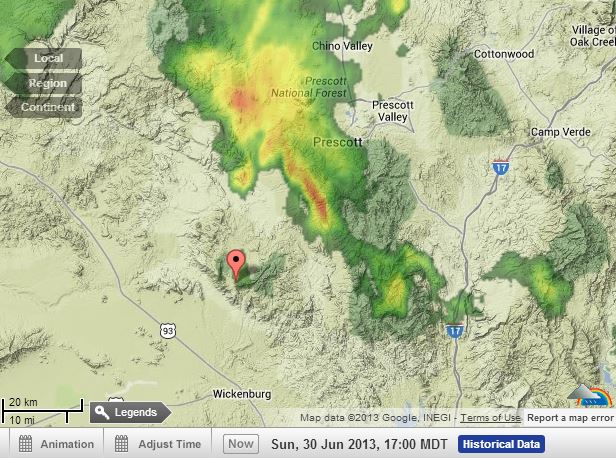
Continue reading “Multiple firefighter fatalities on the Yarnell Fire in Arizona”


